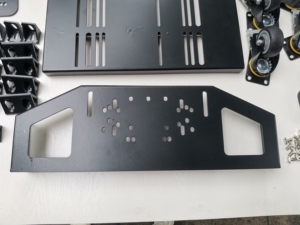Introduction to Welding Simulators
Welding simulators are cutting-edge training tools designed to provide a realistic, hands-on experience for students and professionals aspiring to master the art of welding. These advanced simulators replicate various welding processes, allowing users to practice and refine their skills in a safe, controlled environment. By employing virtual environments, welding simulators help bridge the gap between theory and practical application, substantially enhancing learning outcomes.
Types of Welding Simulators
There is a diverse range of welding simulators available, each designed to cater to specific training needs and welding techniques. Here are some common types:
- Arc Welding Simulators: These simulators focus on gas metal arc welding (GMAW), gas tungsten arc welding (GTAW), and shielded metal arc welding (SMAW).
- Robotic Welding Simulators: These focus on programming and operating robotic welding systems, ideal for industrial training.
- Multi-Process Simulators: Able to mimic various welding processes, these simulators provide a broader skill set for users.
- Augmented Reality (AR) Welding Simulators: Utilizing AR technology, these simulators provide a highly immersive experience that enhances situational awareness.
Function, Feature, and Design of Welding Simulators
Welding simulators come packed with essential features and functionalities that set them apart from traditional training methods:
- Realistic Simulation: High-fidelity graphics and physics engines create an authentic welding environment.
- Skill Assessment: Trainees can receive instant feedback on their performance, including metrics like weld quality and technique precision.
- Customizable Settings: Users can adjust parameters such as material type, thickness, and welding position for varied training scenarios.
- Training Modes: Simulators often offer beginner, intermediate, and advanced modes to match the user’s skill level.
- Accessibility: With many simulators available in software form, trainees can practice anytime and anywhere, making training flexible and convenient.
Applications of Welding Simulators
Welding simulators have a wide array of applications across various sectors, highlighting their versatility and importance in training environments:
- Educational Institutions: Schools and vocational training centers use welding simulators to teach students the fundamentals of welding without the risks associated with real equipment.
- Industry Training: Corporations employ simulators for training staff as part of workforce development programs to enhance skills and maintain safety standards.
- Skill Assessment and Certification: Organizations utilize simulators to evaluate a worker's proficiency before certifying their skills.
- Research and Development: R&D departments may use simulators to explore new welding techniques and materials in a cost-effective manner.
- Military Training: Various armed services leverage simulators for training personnel in welding tasks crucial for equipment maintenance and repair.

























